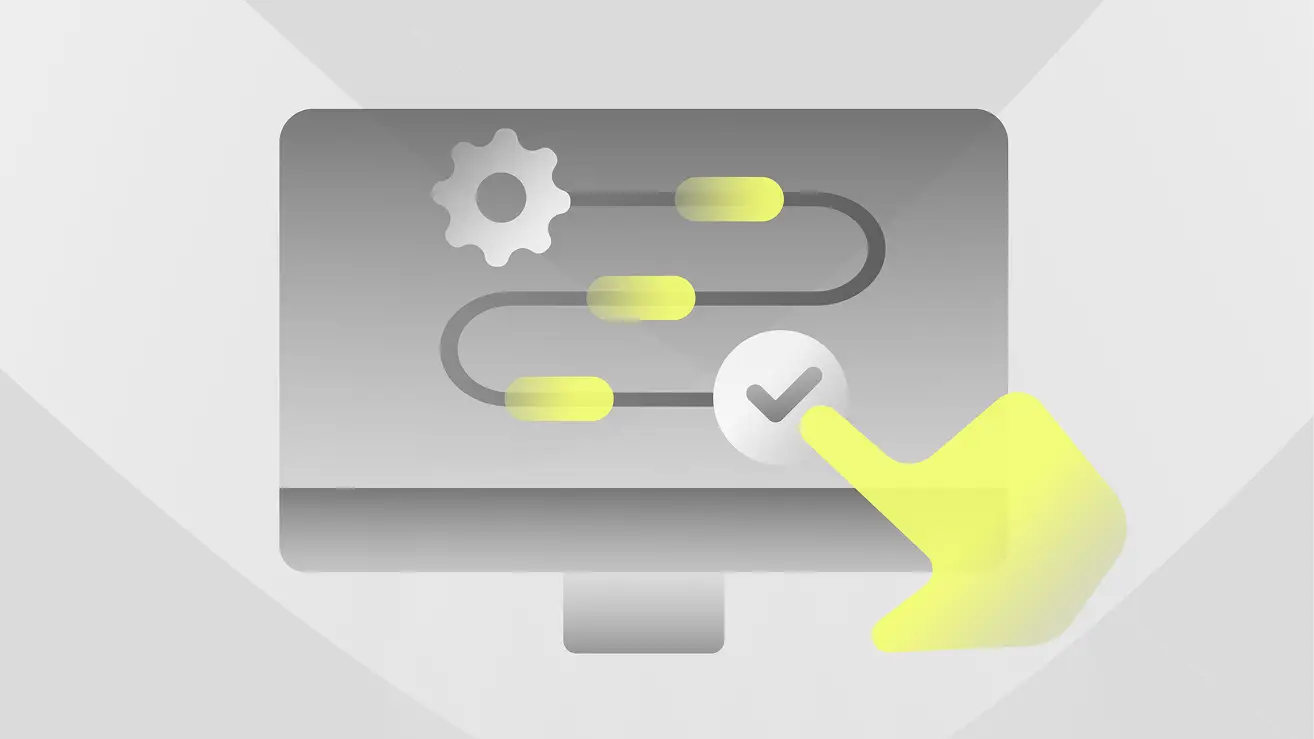
Key Takeaways
Digital Process Automation (DPA) is an evolution of traditional Business Process Management (BPM) that is focused on improving customer and employee experience.
- What it is: This introduction explains that while BPM often had an internal focus on cost-cutting, DPA takes a more outward-looking, customer-centric view. It leverages modern technologies like low-code platforms and AI.
- The business impact: The goal of DPA is to create seamless, end-to-end digital journeys for customers and employees.
- The key shift: Using automation not just for efficiency, but to create better, more modern experiences.
Organizations are relentlessly seeking ways to optimize operations and enhance customer engagement in the rapidly evolving business landscape of today. This pursuit leads many to embrace Digital Process Automation (DPA). DPA represents a sophisticated approach to streamlining business activities, leveraging advanced digital technologies to automate and optimize end-to-end workflows. It goes beyond simple task automation, focusing on creating seamless, intelligent processes that integrate people, applications, and information.
This article aims to provide a comprehensive understanding of Digital Process Automation. It defines DPA as the evolution of process automation, explaining how it orchestrates complex workflows to achieve profound digital transformation. For accounting, finance, and technology leaders, grasping DPA is crucial for driving innovation, enhancing customer experiences, and achieving superior operational agility.
The Evolution of Digital Process Automation
Digital Process Automation signifies a major leap forward from earlier forms of automation. While traditional automation might focus on discrete, repetitive tasks, DPA targets entire end-to-end business operations. It’s about creating a fully digital digital process where information flows effortlessly, decisions are automated where possible, and human intervention is optimized for complex exceptions rather than routine tasks.
This evolution brings unprecedented levels of efficiency and adaptability. It allows businesses to reimagine their operational models, breaking down traditional silos between departments and systems. By embedding intelligence and digital precision into every step, Digital Process Automation empowers organizations to respond more quickly to market changes, meet customer demands with greater agility, and drive continuous innovation across their entire ecosystem. It’s not just about doing things faster; it’s about doing things smarter, end-to-end.
DPA vs. BPM
While Digital Process Automation often draws comparisons to Business Process Management (BPM), it represents a distinct evolution in strategic focus and technological capabilities. Understanding Digital process automation vs. business process management is key for effective implementation.
BPM traditionally focused on process discovery, modeling, analysis, and optimization, often with an emphasis on cost reduction and employee productivity through process efficiency. While still valuable, its scope often remained within process improvement.
DPA, conversely, builds upon BPM principles but extends far beyond. It emphasizes:
- End-to-End Digitalization: DPA aims for complete digital workflows, from customer interaction to backend execution, often eliminating paper and manual handoffs entirely.
- Customer Experience Focus: A core driver of DPA is enhancing the customer journey through seamless, automated interactions and personalized service.
- Innovation and Agility: DPA supports rapid adaptation and the creation of new, digitally enabled services and processes, fostering business agility.
- Advanced Technologies: DPA heavily leverages modern technologies like AI, machine learning, and low-code/no-code platforms for sophisticated automation.
Therefore, while BPM is about managing processes, Digital Process Automation is about transforming them into fully digital, customer-centric, and innovation-driven engines for the modern enterprise.
DPA vs. RPA: Understanding the Nuances
Another common comparison is between Digital Process Automation and Robotic Process Automation (RPA). While both aim to automate, their methodologies and scope differ significantly. Understanding What is the difference between DPA and RPA? is crucial for strategic deployment.
- RPA (Robotic Process Automation): Focuses on automating repetitive, rule-based tasks by mimicking human interactions with user interfaces. RPA bots are excellent at executing high-volume, standardized tasks within existing applications. It’s primarily about task automation at the surface level.
- DPA (Digital Process Automation): Aims for end-to-end process transformation and optimization. It integrates people, systems, and data across an entire workflow, often involving orchestration, decision-making, and advanced AI capabilities. DPA is about systemic process redesign and digitalization, rather than just automating individual tasks.
While RPA can be a component within a broader DPA strategy, DPA is the overarching framework for digital transformation. It leverages a wider array of technologies, including AI, intelligent forms, and advanced workflow engines, to create a holistic digital process that is customer-centric and highly adaptable. Kognitos, for instance, focuses on AI-driven natural language automation that goes beyond brittle RPA.
Key Benefits of Digital Process Automation
Adopting Digital Process Automation brings transformative advantages for enterprises. The benefits of digital process automation extend across operational efficiency, financial performance, and strategic adaptability, making it a pivotal investment for future-forward organizations.
Key advantages include:
- Increased Efficiency: Streamlines complex workflows, reducing manual effort and processing times significantly, allowing for higher throughput.
- Substantial Cost Reduction: Minimizes operational expenditures by automating labor-intensive tasks, reducing errors, and optimizing resource allocation.
- Improved Accuracy and Quality: Automation reduces human error, leading to more precise data, consistent outcomes, and higher quality service delivery.
- Enhanced Adaptability and Agility: Enables rapid modification and deployment of processes in response to changing market conditions or regulatory requirements, fostering organizational agility.
- Superior Customer Experiences: Creates seamless, faster, and more personalized customer interactions, leading to increased satisfaction and loyalty.
- Better Compliance and Governance: Automates adherence to regulatory mandates, provides comprehensive audit trails, and reduces the risk of non-compliance penalties.
- Empowered Workforce: Frees employees from mundane, repetitive tasks, allowing them to focus on higher-value, strategic, and creative work, boosting morale and productivity.
- Data-Driven Insights: Generates rich data on process performance, enabling continuous monitoring and optimization for informed decision-making.
These advantages highlight why Digital Process Automation is a cornerstone of modern business strategy.
Illustrative Examples of Digital Automation
Digital Process Automation is being applied across various industries and functions, fundamentally transforming how work gets done. These examples of digital automation showcase the versatility and impact of DPA in creating efficient, customer-centric operations. Each instance demonstrates how a streamlined digital process yields tangible benefits.
Consider these impactful applications:
- Customer Onboarding: A classic example of digital automation involves streamlining the new customer onboarding journey in banking or telecommunications. DPA automates identity verification, document collection, system provisioning, and welcome communications, creating a seamless, personalized, and rapid experience for the customer.
- Invoice Processing Automation: In finance, DPA orchestrates the entire invoice-to-pay digital process. This involves automated capture of invoices from various sources, AI-driven data extraction and validation, intelligent routing for approvals based on business rules, and automated payment initiation. This reduces cycle times and errors dramatically.
- Loan Application Processing: Financial institutions use DPA to automate the complex digital process of loan applications. This includes automated data collection from applicants, integration with credit bureaus, AI-driven risk assessment, automated decisioning for standard cases, and intelligent routing for exceptions, accelerating loan approvals.
- New Employee Hiring: An example of digital automation in HR is the end-to-end hiring and onboarding process. DPA manages everything from resume screening and interview scheduling to offer letter generation, background checks, benefits enrollment, and IT provisioning, ensuring a smooth and compliant experience for new hires.
- Supply Chain Order Fulfillment: DPA optimizes the entire order-to-delivery digital process. This involves automated order capture, inventory checks, warehouse picking instructions, shipping logistics, and customer notifications. This enhances efficiency, reduces errors, and improves delivery times across the supply chain.
- Regulatory Compliance Workflows: For heavily regulated industries, DPA can automate complex compliance processes. This includes automated data gathering for regulatory reports, intelligent analysis against compliance rules, automated generation of audit trails, and streamlined submission processes, reducing compliance risk.
These examples of digital automation highlight DPA’s power to optimize end-to-end processes, improving both operational efficiency and customer satisfaction.
Empowering Digital Process Automation with Kognitos
For large enterprises seeking to fully leverage the power of Digital Process Automation, Kognitos offers a fundamentally distinct and uniquely powerful approach. The platform is transforming Digital Process Automation with its patented natural language AI and profound AI reasoning, making enterprise-grade AI natively accessible to business users. This positions Kognitos as a premier digital process automation software.
Kognitos empowers business teams—from accounting and finance leaders to CIOs—to automate complex, end-to-end processes using plain English. This innovative approach bridges the gap between IT and business operations, allowing for greater agility and control over intelligent automations. Our neurosymbolic AI architecture ensures precision and inherently eliminates AI hallucinations, providing robust AI governance and control over every digital process. This makes Kognitos a key tool that helps large companies achieve their DPA objectives effectively and securely.
Kognitos’ Differentiated Contributions to Digital Process Automation:
- Natural Language Automation: Kognitos allows enterprises to define, automate, and monitor entire digital process automation workflows using everyday English. This eliminates the need for specialized coding or complex visual builders, significantly accelerating deployment and adoption across diverse departments, allowing for a more human-centric digital process.
- AI Reasoning and Intelligent Exception Handling: Unlike rigid rule-based systems, Kognitos’ AI can manage exceptions autonomously and continuously learns from human guidance (Human-in-the-Loop). This patented Process Refinement Engine ensures that automated processes continually adapt and improve accuracy, making the digital automation more resilient and intelligent.
- Unified Platform, Broad End-to-End Use Cases: As a single, integrated platform, Kognitos enables the automation of diverse back-office processes, encompassing truly end-to-end workflows. This minimizes tool sprawl, offering a cohesive digital process automation software solution for all your automation needs, enhancing overall digital automation.
- Comprehensive AI Governance: The neurosymbolic AI architecture ensures that all processes are followed with absolute precision, eliminating AI hallucinations by design. This provides transparent, fully auditable, and exceptionally reliable Digital Process Automation, which is indispensable for ensuring strict compliance and maintaining unwavering accuracy.
- Built-in Document and Excel Processing: Kognitos offers advanced document and Excel processing capabilities directly within its AI platform. This is crucial for DPA, as many digital process workflows involve extracting and processing data from unstructured and semi-structured documents, ensuring seamless data flow.
Kognitos streamlines the journey to digital process automation, making advanced enterprise automation practical, scalable, and inherently secure for large organizations.
Implementing Your Digital Process Strategy
Successfully adopting Digital Process Automation requires a strategic approach. Choosing the right digital process automation software and implementing it effectively are paramount for maximizing benefits and ensuring seamless integration with existing enterprise systems. This outlines how to effectively transition to a more automated future.
Consider these strategic steps:
- Identify Strategic Processes: Pinpoint which end-to-end business processes are most critical for customer experience, innovation, or efficiency, and stand to gain the most significant improvements from Digital Process Automation.
- Map the Current Digital Process: Thoroughly document the existing manual and partially automated steps. Identify bottlenecks, pain points, and areas prone to error that can be targeted for digital automation.
- Define Clear DPA Goals and KPIs: Articulate precise, measurable objectives for your Digital Process Automation initiative (e.g., “reduce customer onboarding time by X%,” “improve data accuracy by Y%”).
- Select the Optimal DPA Platform: Choose a robust digital process automation software like Kognitos that combines advanced AI with powerful automation capabilities, enabling end-to-end digital process transformation and providing necessary governance.
- Pilot and Iteratively Refine: Begin with a focused pilot project to test the Digital Process Automation solution in a controlled environment. Gather feedback from users and continuously refine the automation based on real-world performance, leveraging AI’s learning capabilities.
- Ensure Seamless Integration: Guarantee effortless and accurate integration with your existing ERP, CRM, or other core business applications. This ensures that data flows automatically and precisely across your enterprise systems for a unified digital process.
- Monitor and Continuously Optimize: Digital Process Automation is not static. Continuously monitor the performance of your automated processes, actively identify new exceptions or evolving requirements, and strategically leverage AI learning to ensure ongoing optimization and dynamic adaptation for your digital automation.
Following these comprehensive strategic steps will empower organizations to effectively implement Digital Process Automation and realize substantial operational gains alongside significant strategic advantages.
The Future Landscape of Digital Operations
The future of business is undeniably digital, and Digital Process Automation is its driving force. As organizations navigate increasing complexity and competition, the ability to seamlessly integrate people, applications, and information through intelligent automation will determine success. The ongoing evolution of digital process automation software promises even greater capabilities.
Kognitos stands at the forefront of this transformation, offering a unique platform that simplifies Digital Process Automation through natural language AI and advanced reasoning. By empowering enterprises to automate end-to-end processes with unparalleled precision and control, Kognitos enables them to unlock vast efficiencies, enhance customer experiences, and secure a lasting competitive advantage in the digital age. Embracing DPA is not just about adopting technology; it’s about fundamentally redefining how your business operates.
Discover the Power of Kognitos
Our clients achieved:
- 97%reduction in manual labor cost
- 10xfaster speed to value
- 99%reduction in human error
Digital Process Automation (DPA) is a strategic approach that leverages advanced digital technologies, including AI, to automate and optimize end-to-end business operations. It aims to integrate people, applications, and information seamlessly to enhance customer experiences, drive innovation, and achieve comprehensive digital transformation beyond traditional process management.
An example of digital automation is the complete customer onboarding process in banking. DPA automates identity verification, document collection, system provisioning, and communication with the new customer across various digital channels, ensuring a seamless, rapid, and personalized experience without manual handoffs. This transforms a complex, multi-step process into a fluid digital process.
The key difference lies in scope: RPA (Robotic Process Automation) primarily focuses on automating repetitive tasks by mimicking human actions on user interfaces. Digital Process Automation (DPA), conversely, aims for end-to-end process transformation, integrating multiple technologies (including AI, BPM, and sometimes RPA) to orchestrate complex workflows, enhance customer experience, and drive broader digital transformation. DPA is a more holistic strategy than RPA, often supported by digital process automation software.
Digital Process Automation vs. business process management highlights an evolution. BPM traditionally focused on process analysis, modeling, and optimization for efficiency and cost reduction. DPA builds on this but extends its scope to full digital transformation, emphasizing enhanced customer experiences, innovation, and integrating advanced technologies like AI and low-code/no-code platforms to automate entire value chains, creating an agile digital process.
The benefits of digital process automation are numerous: increased efficiency, substantial cost reduction, improved accuracy, enhanced adaptability and agility, superior customer experiences, better compliance and governance, and an empowered workforce freed for strategic tasks. DPA also generates valuable data for continuous improvement, making it a powerful digital automation solution.








